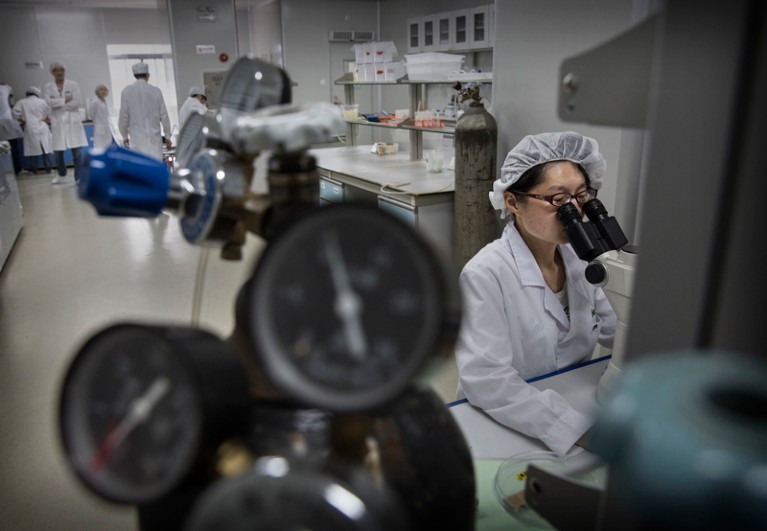
China wants more of its best researchers to publish in domestic journals. But what does that mean for collaborations that span borders, such as the Sun Yat-sen University–Michigan State University Joint Center of Vector Control for Tropical Diseases in Guangzhou, China?Credit: Kevin Frayer/Getty
China’s researchers and research institutions are evaluated, ranked and funded according to their record of publishing in journals covered by the Science Citation Index (SCI), an international database of articles and citation records for around 9,000 journals.
The number of articles in these journals by authors at Chinese institutions increased nearly fourfold between 2009 and 2019. In that time, China’s researchers have increased international collaborations, which have helped them secure international publications. But there have been concerns that widespread use of publication metrics incentivizes lower-quality work, as does the fact that some institutions pay bonuses to those publishing in journals.
But that might be about to change. Last month, the Chinese government ordered institutions to stop promoting or recruiting solely on the basis of number of papers or citations, and to end publishing bonuses.
Research will still be evaluated, but institutions have until the end of July to propose new indicators. An alternative system will need to measure research quality and innovation, and whether something represents a significant advance or helps to solve an important societal problem. Evaluators will need to rely more on peer judgement, and, crucially, researchers must consider publishing in non‑SCI-indexed journals.
The change is significant, and intended to meet two important government objectives. First, it is designed to help root out plagiarism, self-citation and colleagues citing each others’ work to boost their citations. Second, it is aimed at boosting China’s own research-publishing industry, which the government has wanted to do — but which is difficult if the best research is published internationally.
To enable more domestic research publishing, the government last year allocated one billion yuan (US$143 million) over 5 years to improve the standards of some 280 Chinese journals, most of which publish in English. These journals have been ranked, with each of the top 22 receiving between one million and five million yuan annually to help them attract a higher standard of submissions, not only from China, but from around the world.
When this policy was announced, it wasn’t known how the publishers would use their subsidy or how the government would measure success. The answers to both questions are now clearer.
China’s government is urging its researchers to play their part by publishing in home-grown journals. That is important, not least because it will make science more accessible in China. But in setting up the new evaluation system, the government must be careful to protect the collaborations — and the relationships — that came with the old.

 Five ways China must cultivate research integrity
Five ways China must cultivate research integrity








